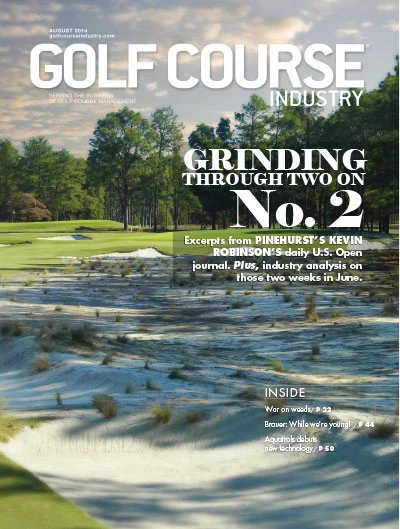 Jeffrey D. Brauer | Golf has a pace of play problem. I can hear Jeff Foxworthy: “If a turtle passes you on the golf course… You might be playing too slow.” The only problem is we all think it’s the “other guy” and do nothing personally to play faster. However, pace of play experts, like Steve Southard and Bill Yates both say that, more often than not, the trials and tribulations of average golfers are NOT the main cause of slow play! Both note there is a difference between slow players and long playing times. And both conclude that management and design factors create bottleneck holes that slow play. I know that is hard for most to believe, as even Yates cites one study where:
That amounts to an average group using 8.04 shots to reach an easy-ish par 3 vs. the four shots required by par. The same ratio translates to 16/24 shots on a par 4 or 5, if not higher. But it’s still not the problem. The golf industry as a whole talks about slow play slowing growth and participation, and writes papers and convenes conferences where ideas are thrown around and initiatives rolled out, all of which seem to die quickly. As with “big cups” and “shorter courses,” golf seems pretty stuck in the mud most days. The USGA has its catchy “While We’re Young” slogan, which works better as a pick-up line at an old folk’s home. Golf course architects sat on those USGA committees, but provided more generic advice than real solutions. And, because magazines tend to give awards for tough and photogenic courses, we usually design tough and photogenic courses when all the evidence points to golf having enough of those, and too few designed for one of our biggest industry needs – faster play. And maybe that is just the way things are. I have long figured that customized operational changes at individual courses are more effective than industry-wide campaigns. I was once partners in a public course with the Texas Legend “Buster” Creagh, who was famous for enforcing fast play, occasionally foregoing traditional Texas friendliness. His techniques included removing players from the course with a full refund if they promised not to come back. According to Southard, if you want faster play at your course, you have to rely on … you. No one else is coming to your rescue, although he and Yates will be more than happy to share their research and knowledge, in book form or via consulting and site visits. Both have lots of worthwhile information – some of it downloadable for free. I like to think of architects as the prime source of design information, but our educational pamphlets on the subject (even I penned an ASGCA “fast play” article years ago) tend to be based on “everyone knows…” theory. To give credit where credit is due, these experts base their recommendations on actual research. As I said last month, the best way to manage something is to measure it first, which they have done. While this is a design column, most courses need to manage the problems their design has given them. A sampling of tips from Southard:
And from Bill Yates: Each course has a pace of play “par rating” consisting of:
Hole sequence matters:
Course Management:
Maintenance:
If pace of play is one of our biggest issues, then the design criteria for almost any new course or major renovation should be to design to speed up play. Next month, I will provide some more design tips you might incorporate into your course, either a few at a time, or in a major renovation, if and when that occurs.
Jeffrey D. Brauer is a veteran golf course architect responsible for more than 50 new courses and more than 100 renovations. A member and past president of the American Society of Golf Course Architects, he is president of Jeffrey D. Brauer/GolfScapes in Arlington, Texas. Reach him at jeff@jeffreydbrauer.com. |
Get curated news on YOUR industry.
Enter your email to receive our newsletters.
Explore the August 2014 Issue
Check out more from this issue and find your next story to read.
Latest from Golf Course Industry
- Advanced Turf Solutions’ Scott Lund expands role
- South Carolina’s Tidewater Golf Club completes renovation project
- SePRO to host webinar on plant growth regulators
- Turfco introduces riding applicator
- From the publisher’s pen: The golf guilt trip
- Bob Farren lands Carolinas GCSA highest honor
- Architect Brian Curley breaks ground on new First Tee venue
- Turfco unveils new fairway topdresser and material handler







